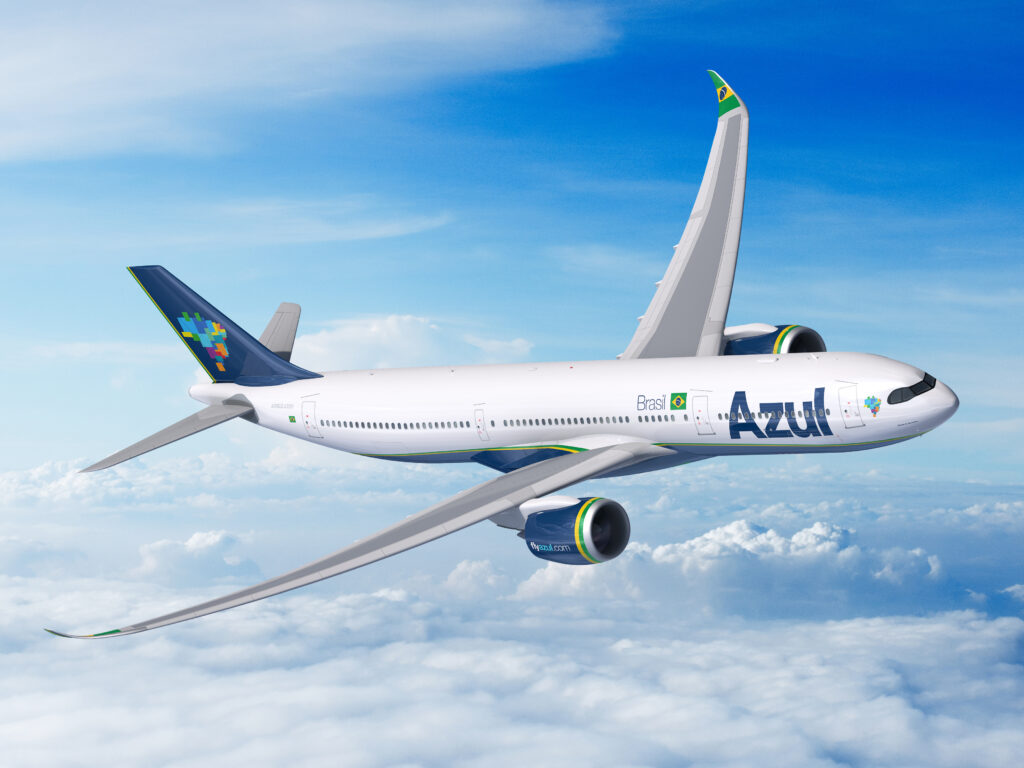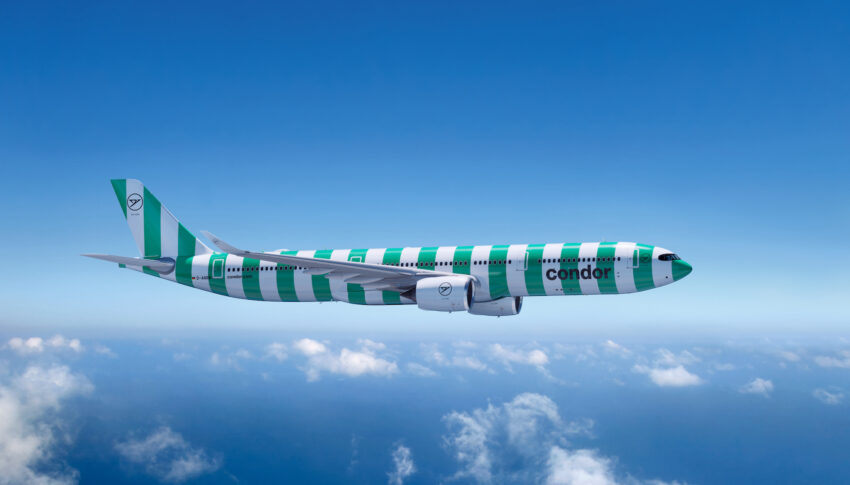The widebody twinjet Airbus A330 is one of the unexpected success stories of aviation, selling more than four times the number of its four-engined sibling, the A340. As production of its next-generation re-engined A330neo variant (for “new engine option”) continues to accelerate over the original A330ceo (“current engine option”), we talk to German airline Condor and Brazilian carrier Azul to learn how the innovation, performance, maintenance and digitalisation of these aircraft is driving change within their operations.
As we might imagine from an aircraft where “neo” stands for “new engine option”, the new higher bypass engines are a big part of the change from A330ceo to A330neo. The 112” swept fan of the Rolls-Royce Trent 7000 is 15 per cent larger than the previous generation, with double the bypass ratio. But in addition, new 64m wings with high span and high aspect ratio, together with an A350-inspired sharklet, well as new composite materials, titanium and efficiency-driving avionics, all combine for a 14 per cent reduction in fuel burn per seat compared with the A330ceo and, Airbus says, a 25 per cent reduction compared with the previous generation aircraft that airlines are replacing with it.
But, overall, German carrier Condor tells us via spokesperson Charles Mardiks, “The basic structure of the aircraft regarding the flight control, landing gear, hydraulic systems, et cetera, are almost identical — and the same is true regarding the maintenance.”
Continues Condor, “the main difference is with the installed engines. The A330-200 has Rolls-Royce Trent 700 engines where the A330neo is equipped with highly efficient Rolls-Royce Trent 7000 engines. Both differ fundamentally in terms of structure, efficiency and handling that must be taken into consideration when it comes to maintenance, repair, and operations.”
Nearly a hundred A330neos now operated by two dozen airlines, with a total of nearly 300 on order. That’s more orders than the A380 and nearly two thirds the total of A340s ever built. The diversity of customers is also notable: in addition to Condor and Azul, customers range from Delta’s fleet of 20 (with a planned total of 36) A330-900neos to Air Greenland’s single -800neo, via Lion Air, Virgin Atlantic, Air Senegal and TAP Air Portugal.
Brazilian airline Azul tells us via spokesperson Letícia Remonte that it has achieved the 14 per cent fuel consumption reduction “in typical Azul operations”.

A330neo in Azul Linhas Aereas livery, courtesy of Airbus.
Airbus also has the benefit of offering single and mixed fleet flying, where the company’s common flight deck design — with the exception of the Bombardier-designed A220 — means that pilots can either fly two aircraft (the A330neo and A350, say) with a single aircraft type rating as single fleet flying, or to be cross-qualified for two aircraft like the A320 and A330neo as mixed fleet flying.
Indeed, says Remonte, “Airbus designs its aircraft in such a way as to maintain as much commonality as possible between fleets. This is to minimise the training time required for the operation of one or another model. So the pilots that fly the A330ceos are the same ones that fly the A330neos. There are no major differences between driving one or the other model.”
For airlines like Delta that also operate the A350, the A330neo is a notable addition, especially given that it continues to operate the A330-200 and -300 aircraft it inherited from its predecessor airline Northwest. Speaking to the airline’s fleet experts last September, they noted that the aircraft’s efficiency, commonality — and, practically speaking, its early availability compared with the backlog for the A350 — were big draws.
On the MRO (maintenance, repair and overhaul) side, Azul’s Remonte explains, “technicians have separate training for each model: although the operation and cockpit are very similar, there may be important differences in components. Imagine the difference between the wings between the A330neos and ceos — even though the piloting performance is similar, the components and structures between the two wings can be very different. The training is mostly face-to-face given by the manufacturers. The A350 maintenance course, for example, lasts 10 weeks.”
Indeed, elaborates Condor’s Mardiks, “The maintenance team who are trained to obtain the license for the work on the A330 in general are extensively trained. The training takes place in Toulouse, Hamburg, and Frankfurt where the team is trained on the two different engines. The typical training for the A330neo takes at least 30 days of theoretical training and at least 10 days of practical training on the aircraft. During the training course, Condor Technik employees are being trained and on in-depth systems, avionics, engine systems as well as the structure of the aircraft.”
Many of those systems are entirely new, with a modern aircraft backbone and technology built for the connected aircraft age, despite the original A330 having first flown some 30 years ago.
“The A330neo introduces a new data transmission technology through a component called FOMAX, Azul’s Letícia Remonte explains. “It works as a centraliser of information that circulates in [many] varied systems of the aircraft. This data is massively transmitted and made available on an Airbus platform called Skywise. The use of this data today is used to monitor information and small variations of certain parameters that can anticipate the replacement of components before failure. For example, if the electrical current for moving a certain actuator starts to rise, this could present a near failure. We call this health monitoring. This precaution anticipates planned replacement of components, avoiding unforeseen breakdowns in remote bases.”
Observing the rise of the A330neo over the past twenty years has been informative from a macro-trend perspective. From its early 2000s conception — first as a simple re-engine and its “lite” concept, the initial improvements of the first A350 — then as its own product alongside the redesigned A350 XWB, the A330neo’s story is one of technological innovation alongside hard-nosed capital expenditure economics. As airlines continue their recovery from the COVID-19 downturn and look towards fuel efficiency and emissions reduction, the story of how the A330neo continues to develop will be a fascinating one.
Author: John Walton
Published 18 May 2023
Feature image: ‘A330neo Island’ courtesy of the Condor Newsroom at Condor.com




